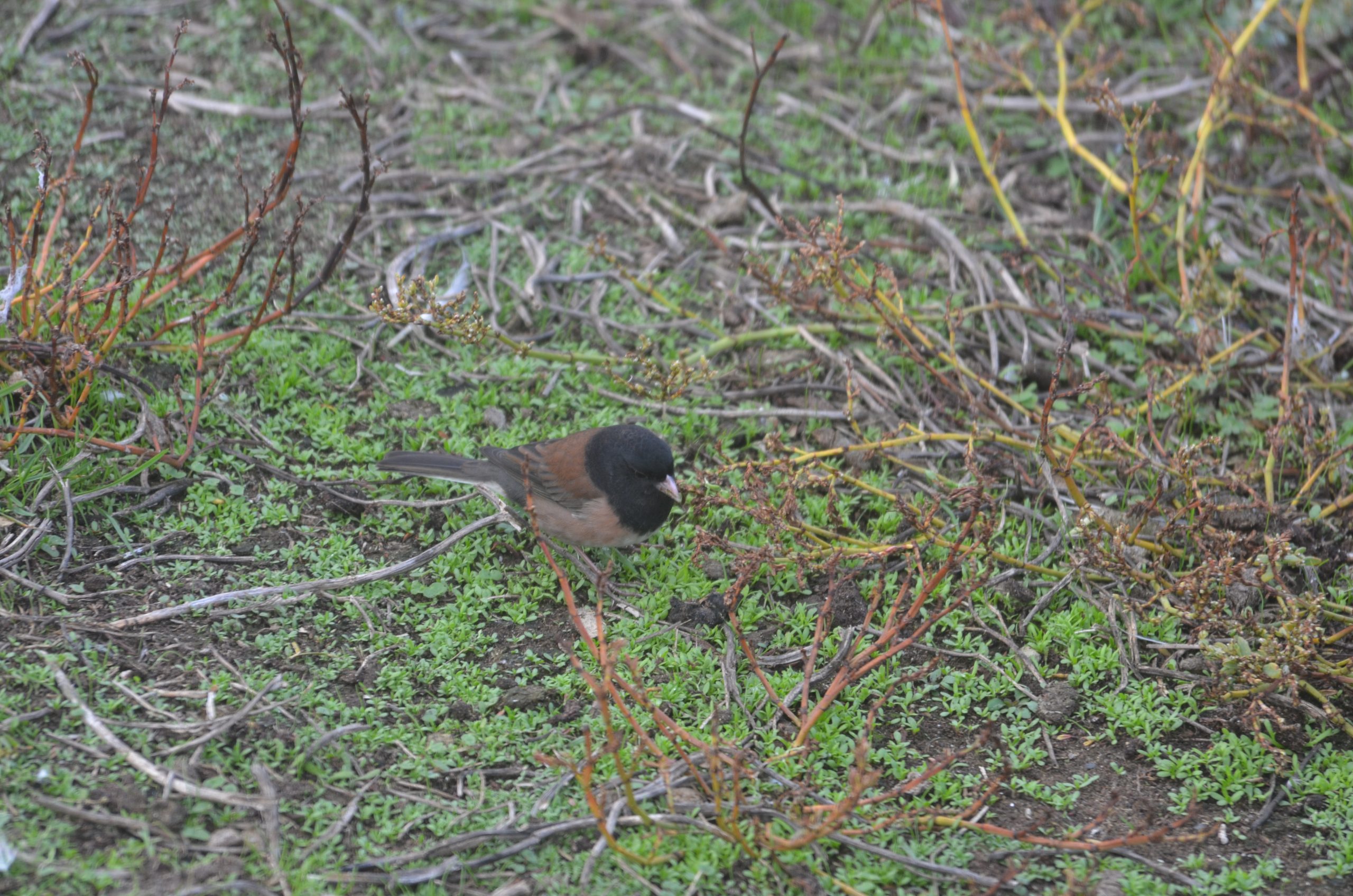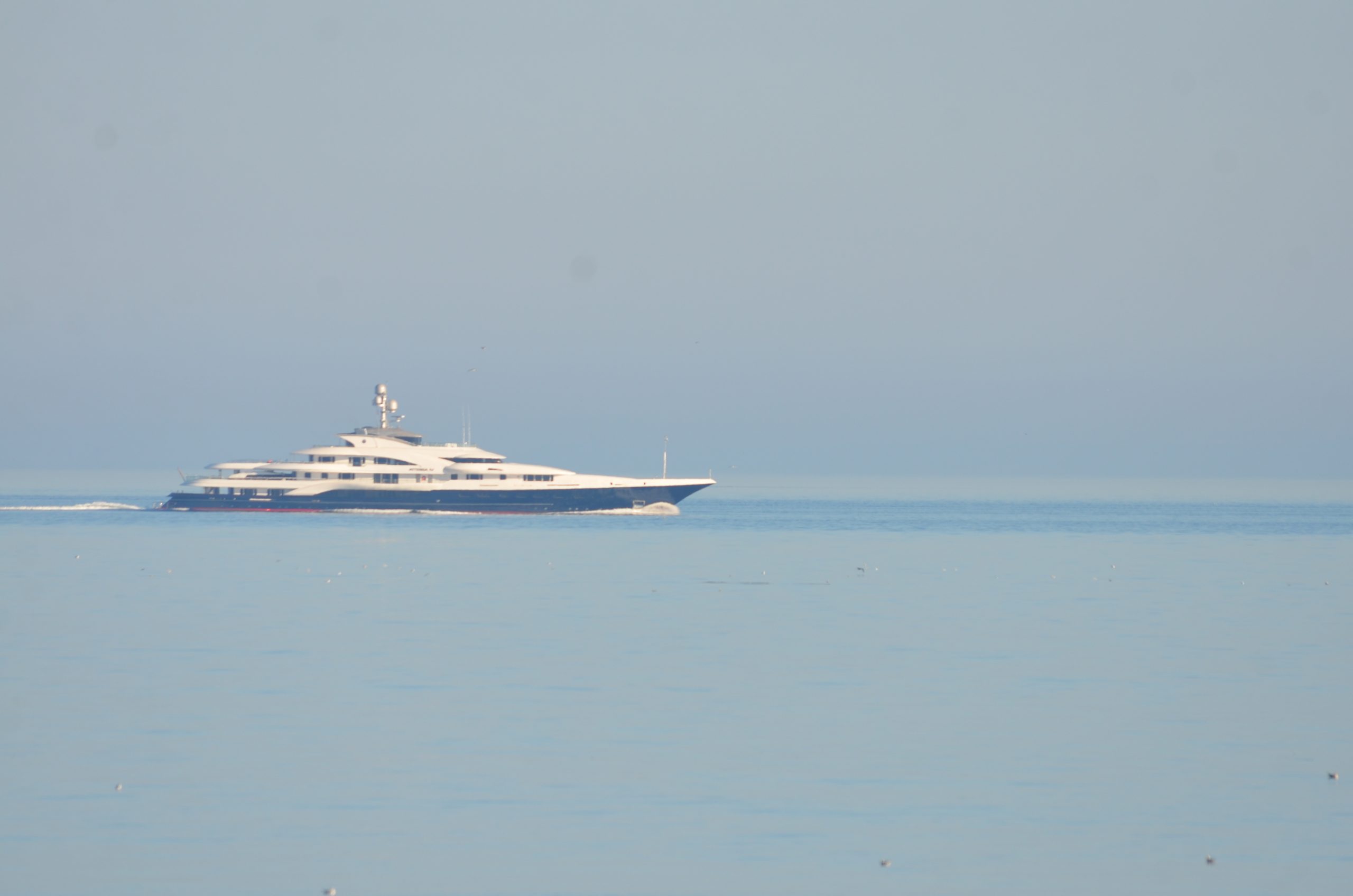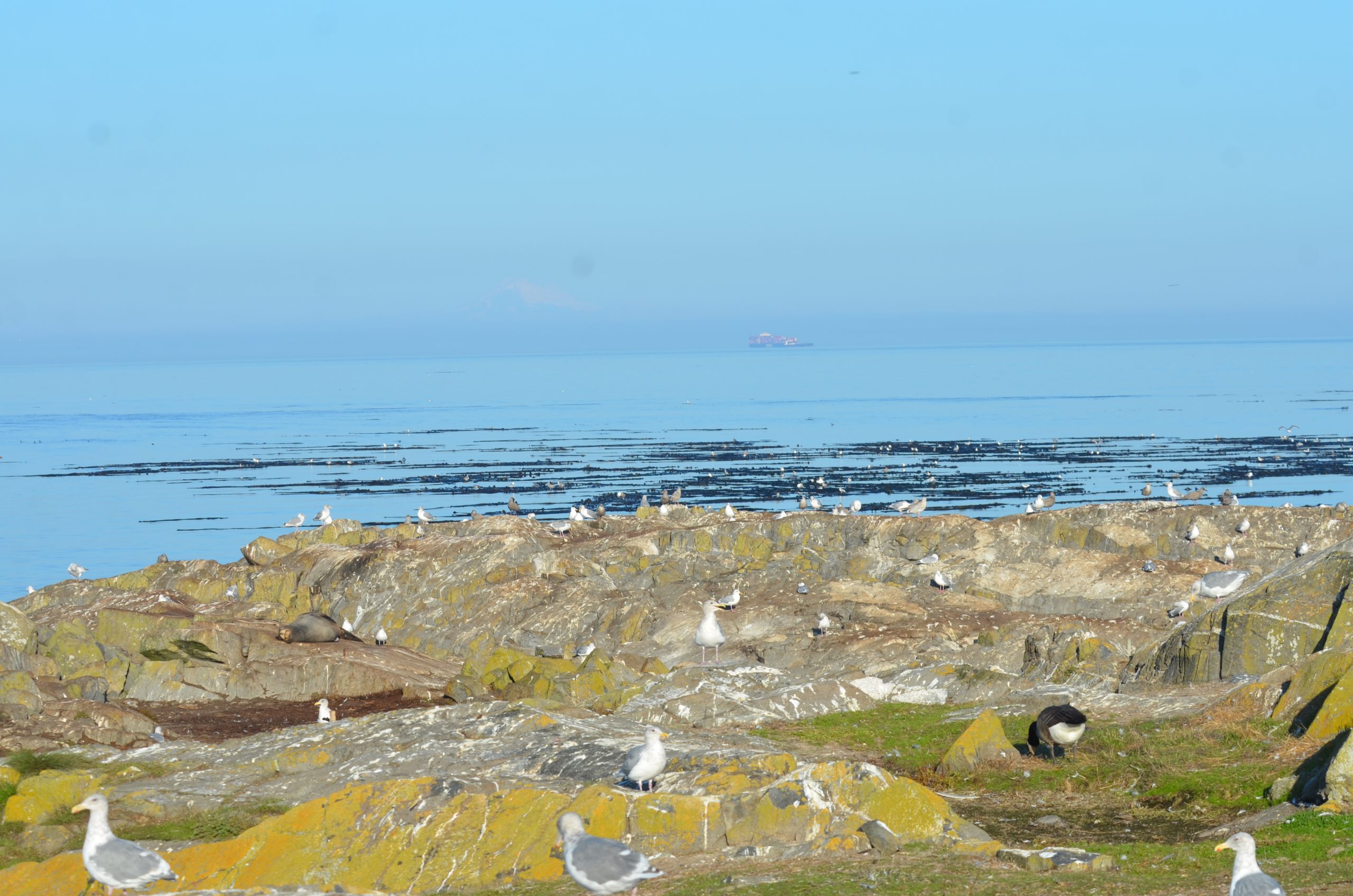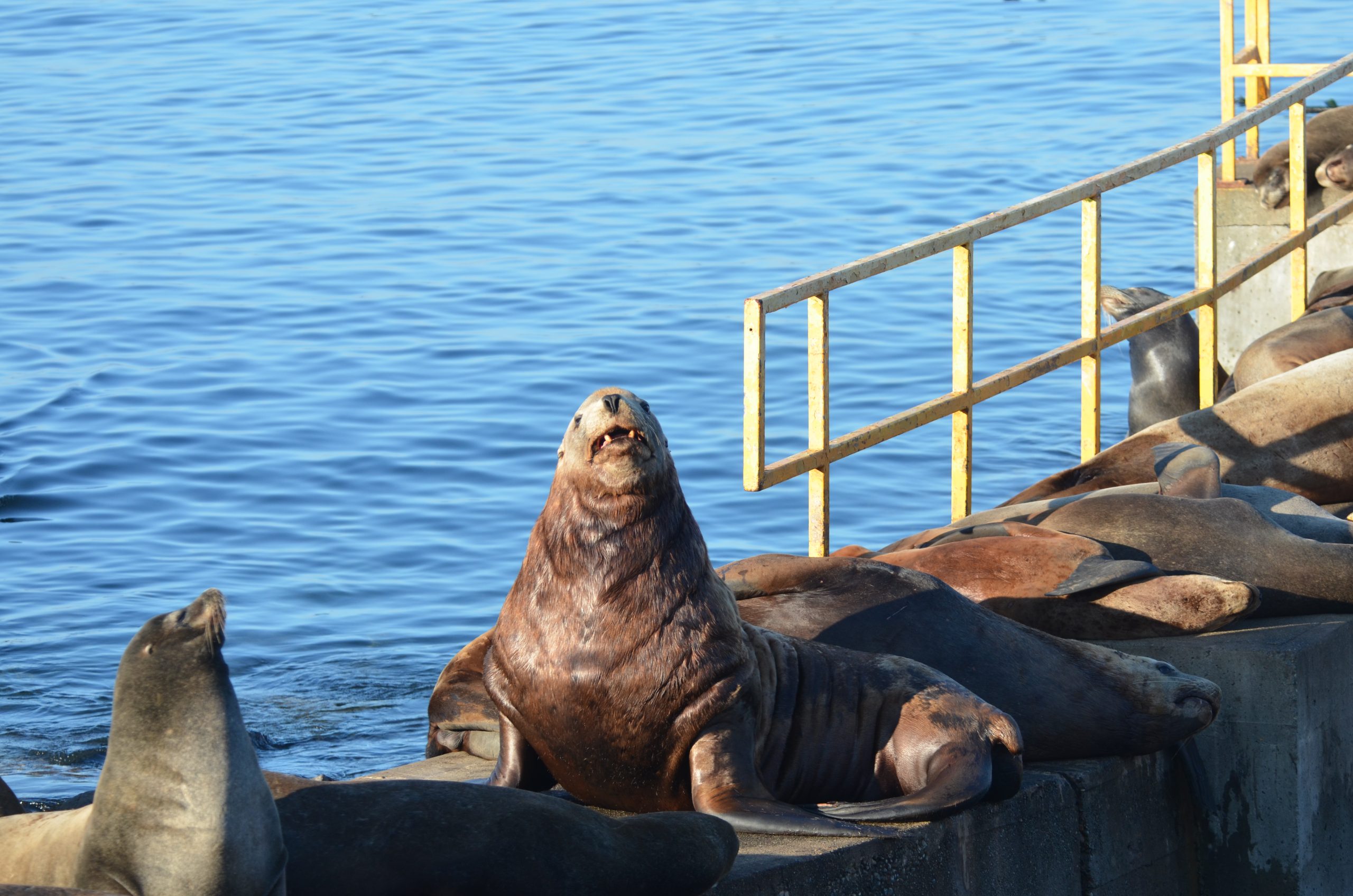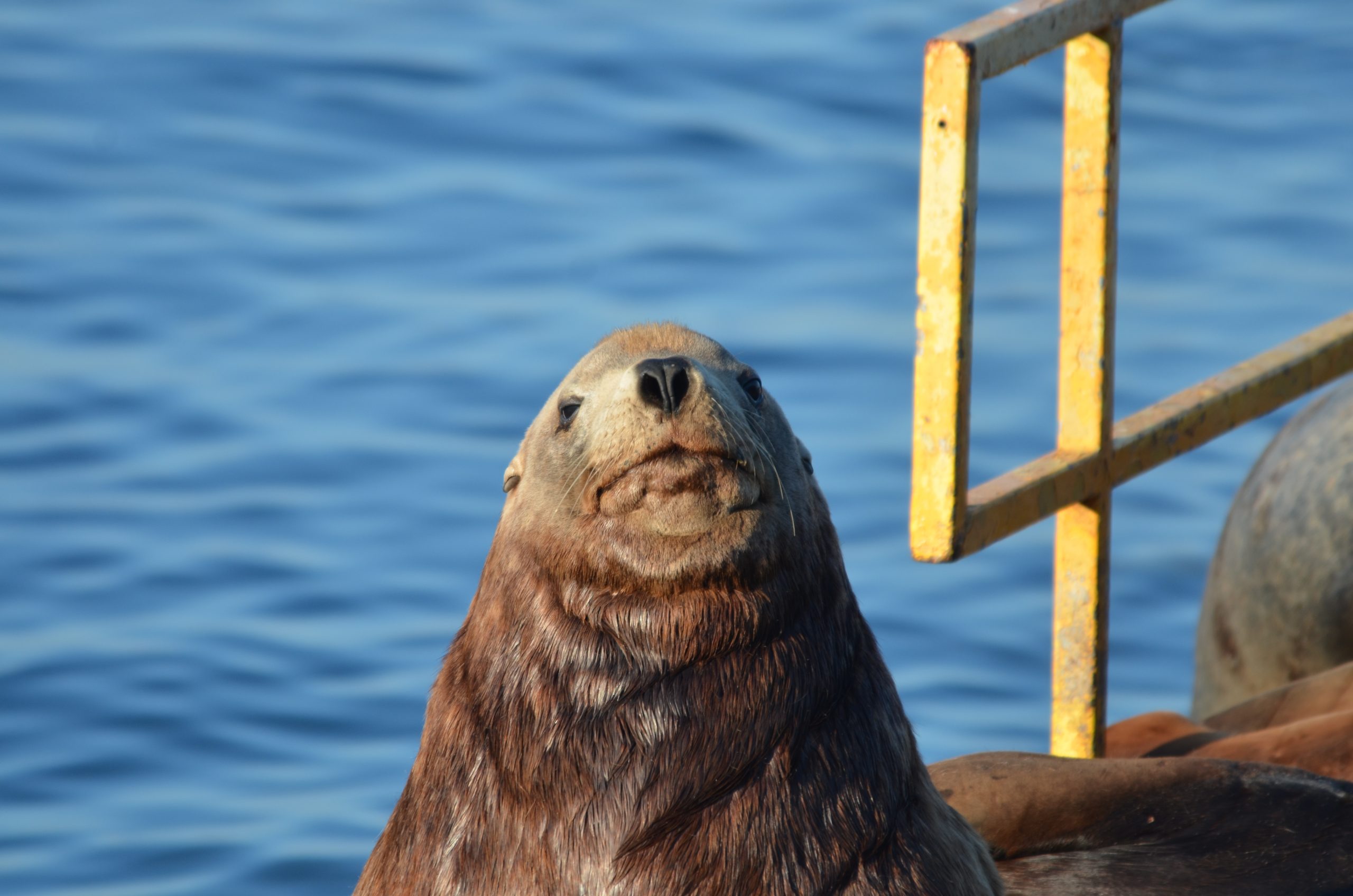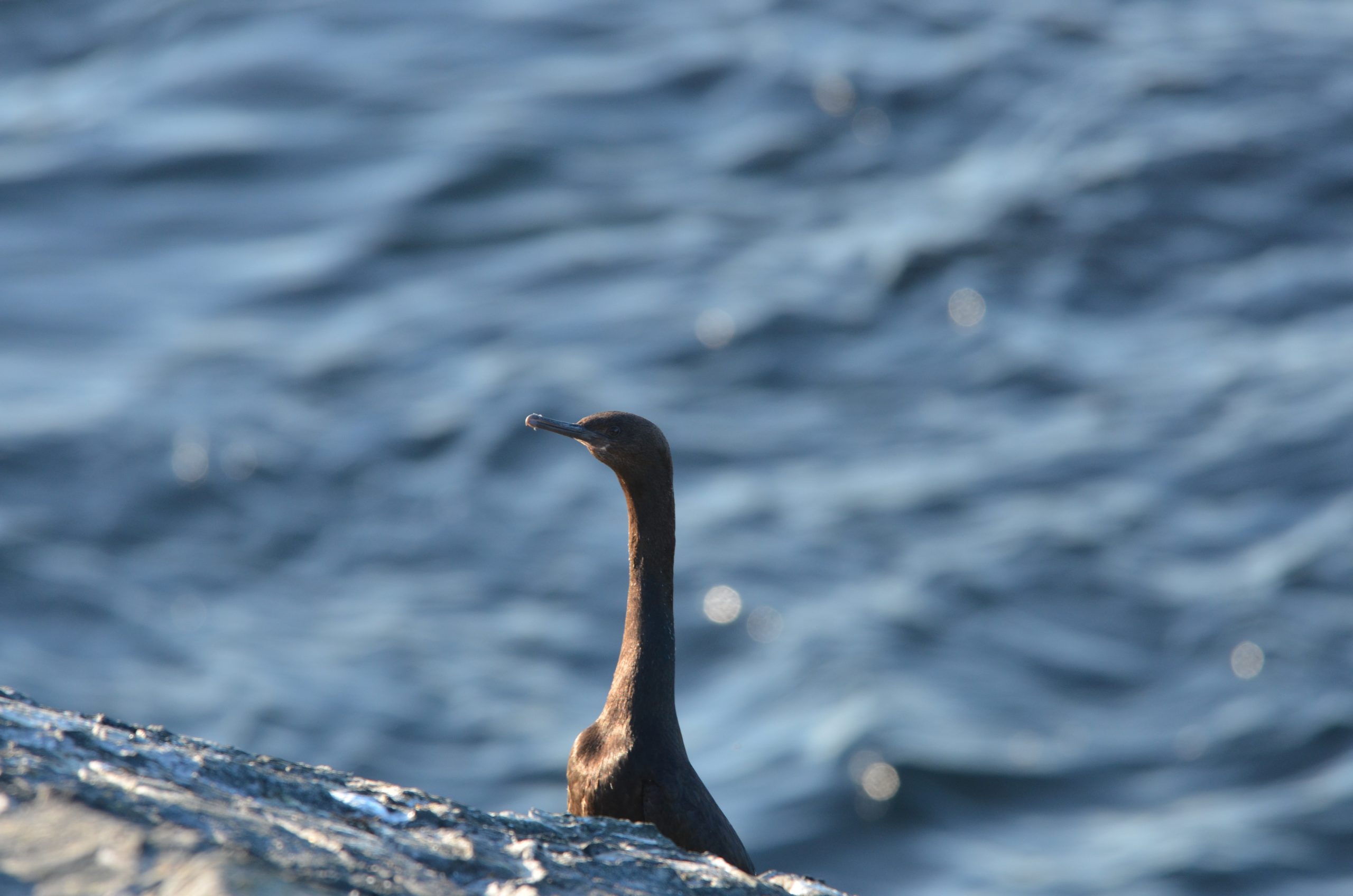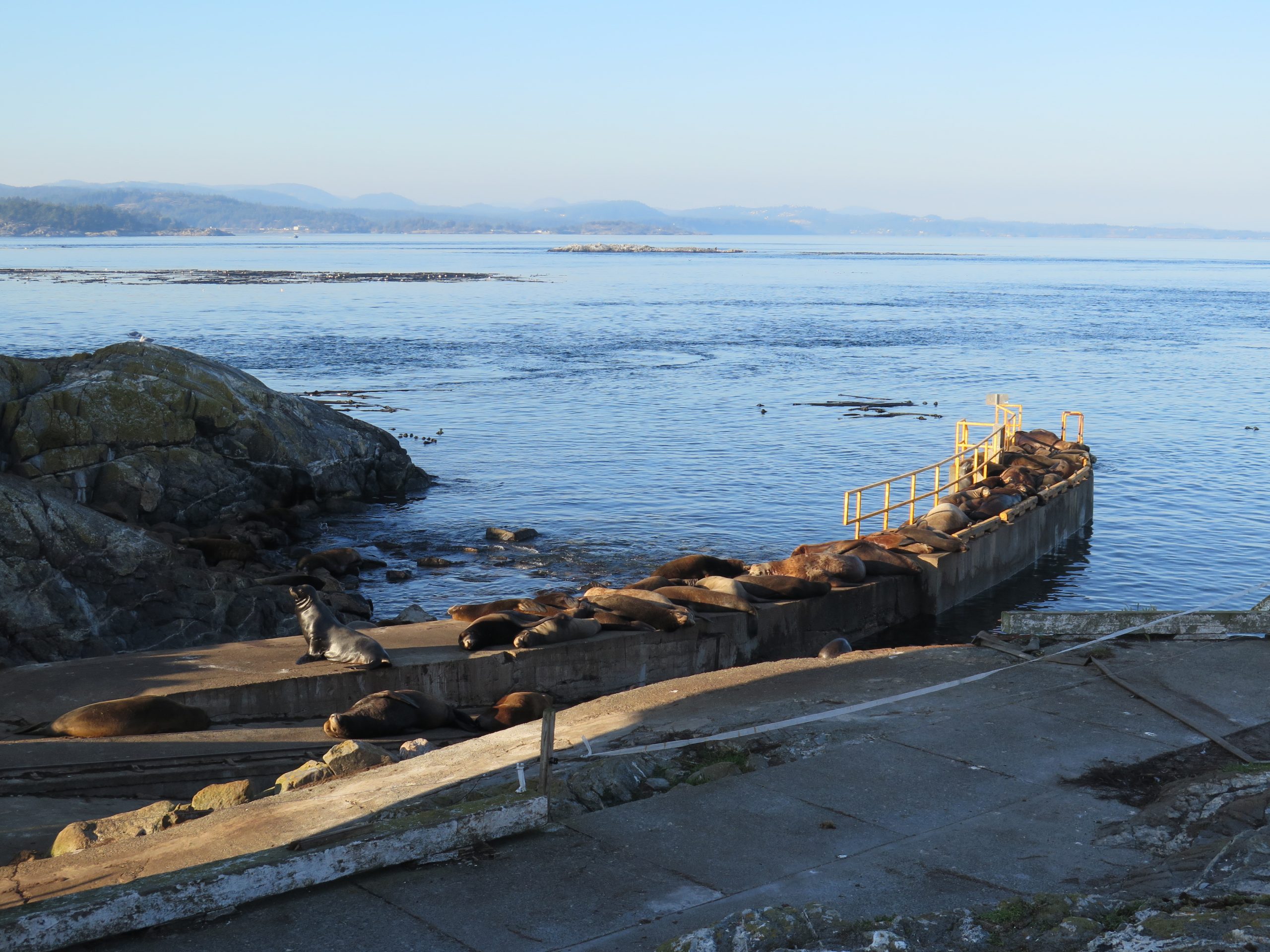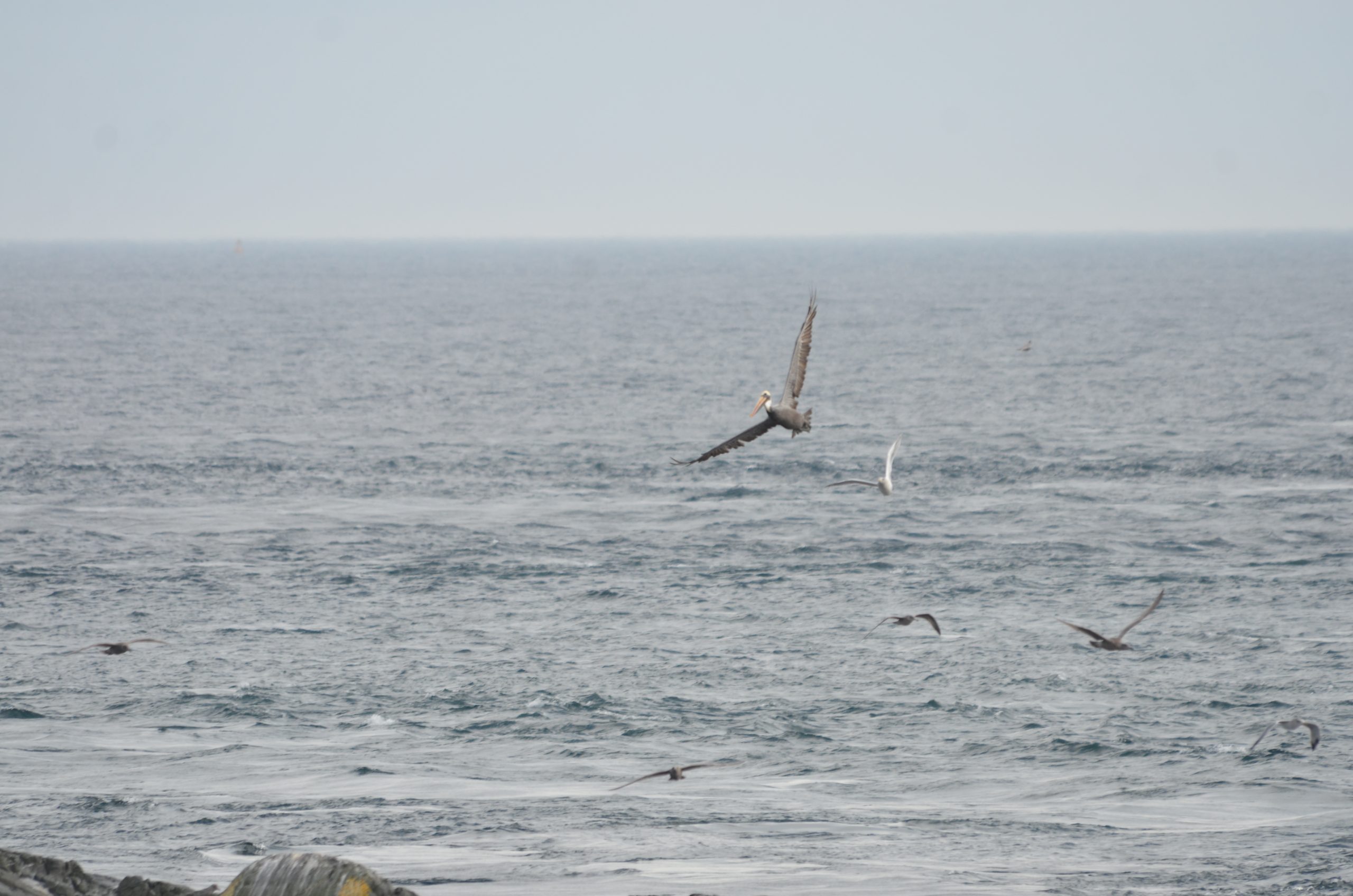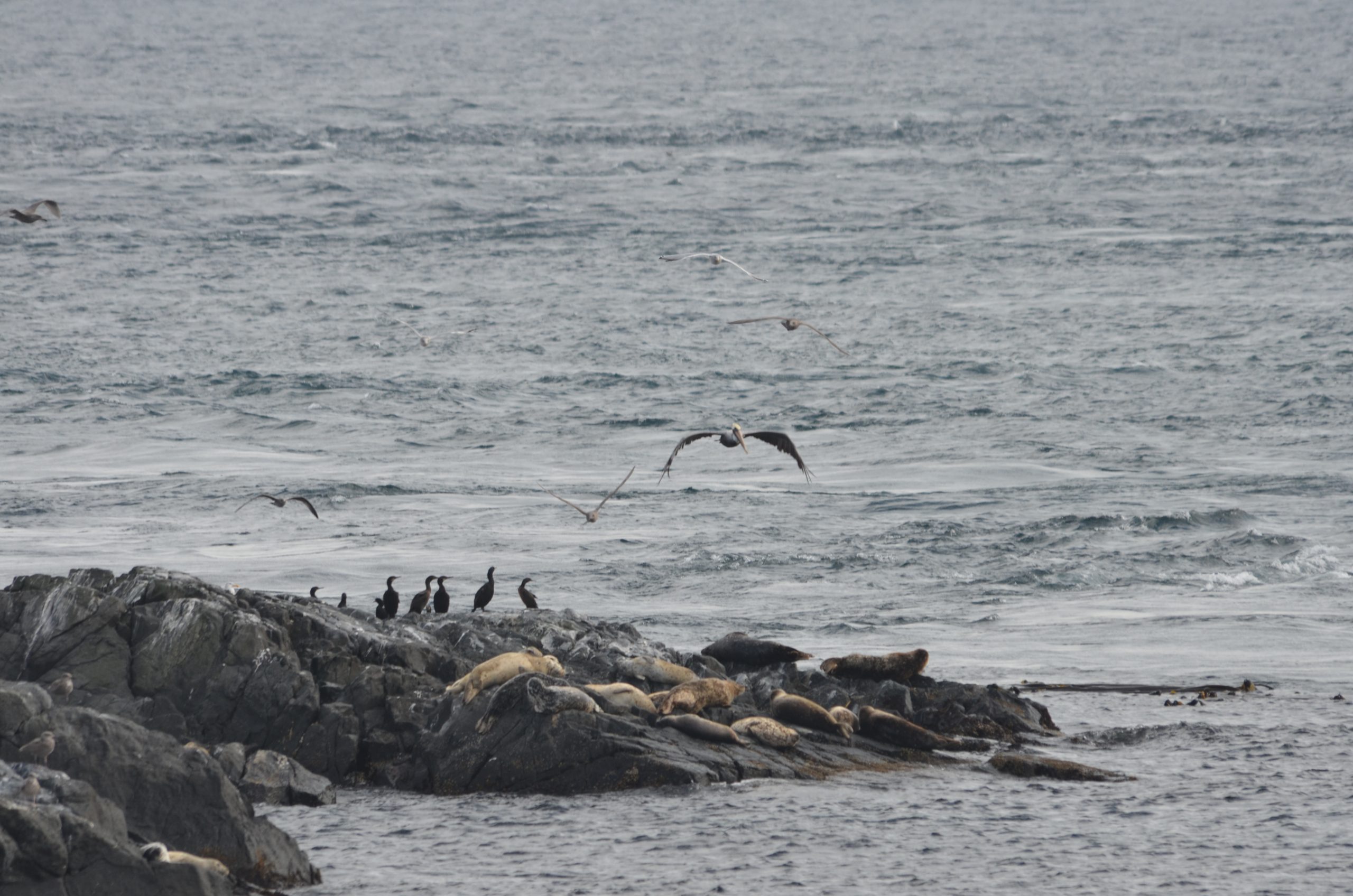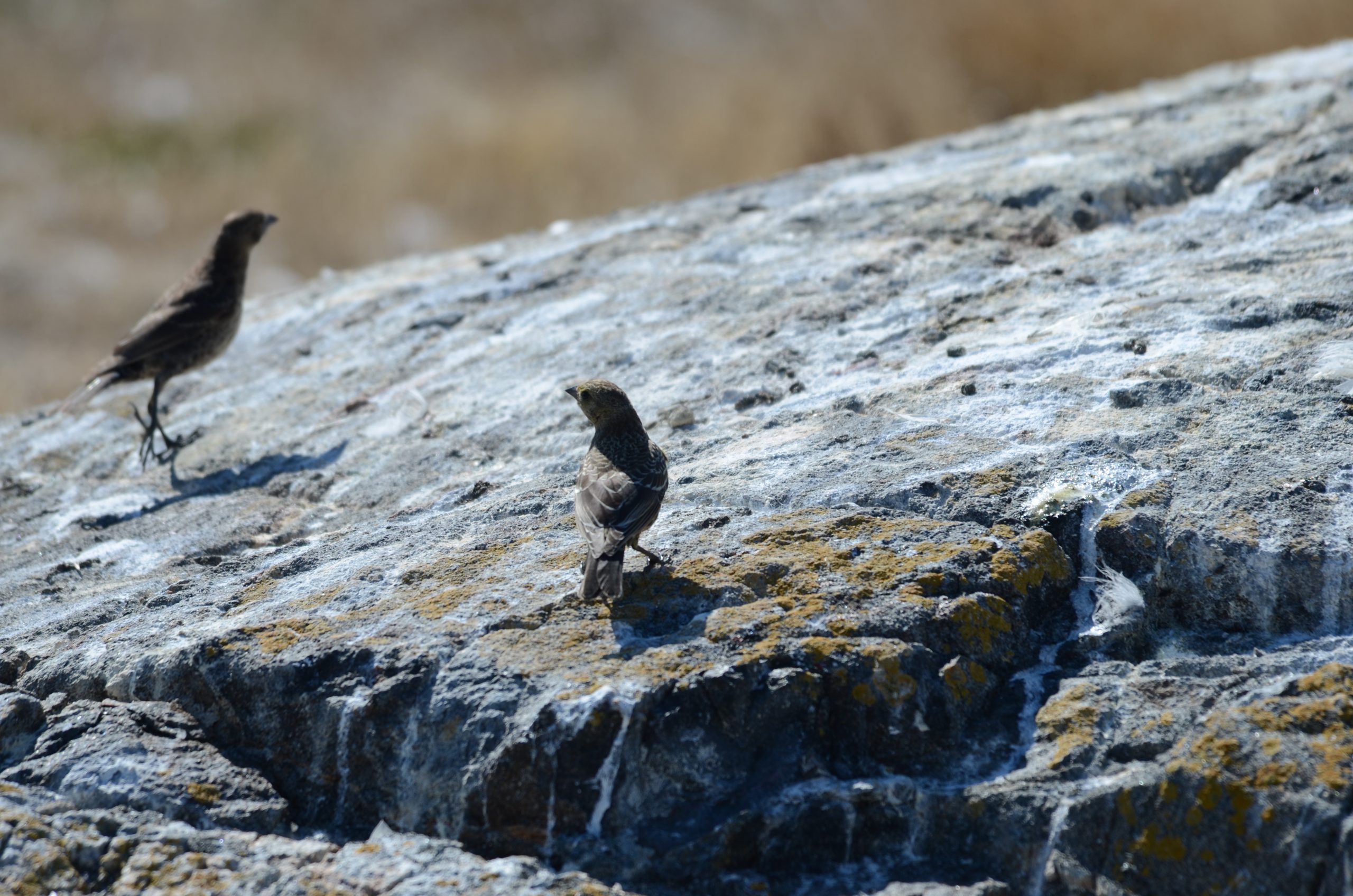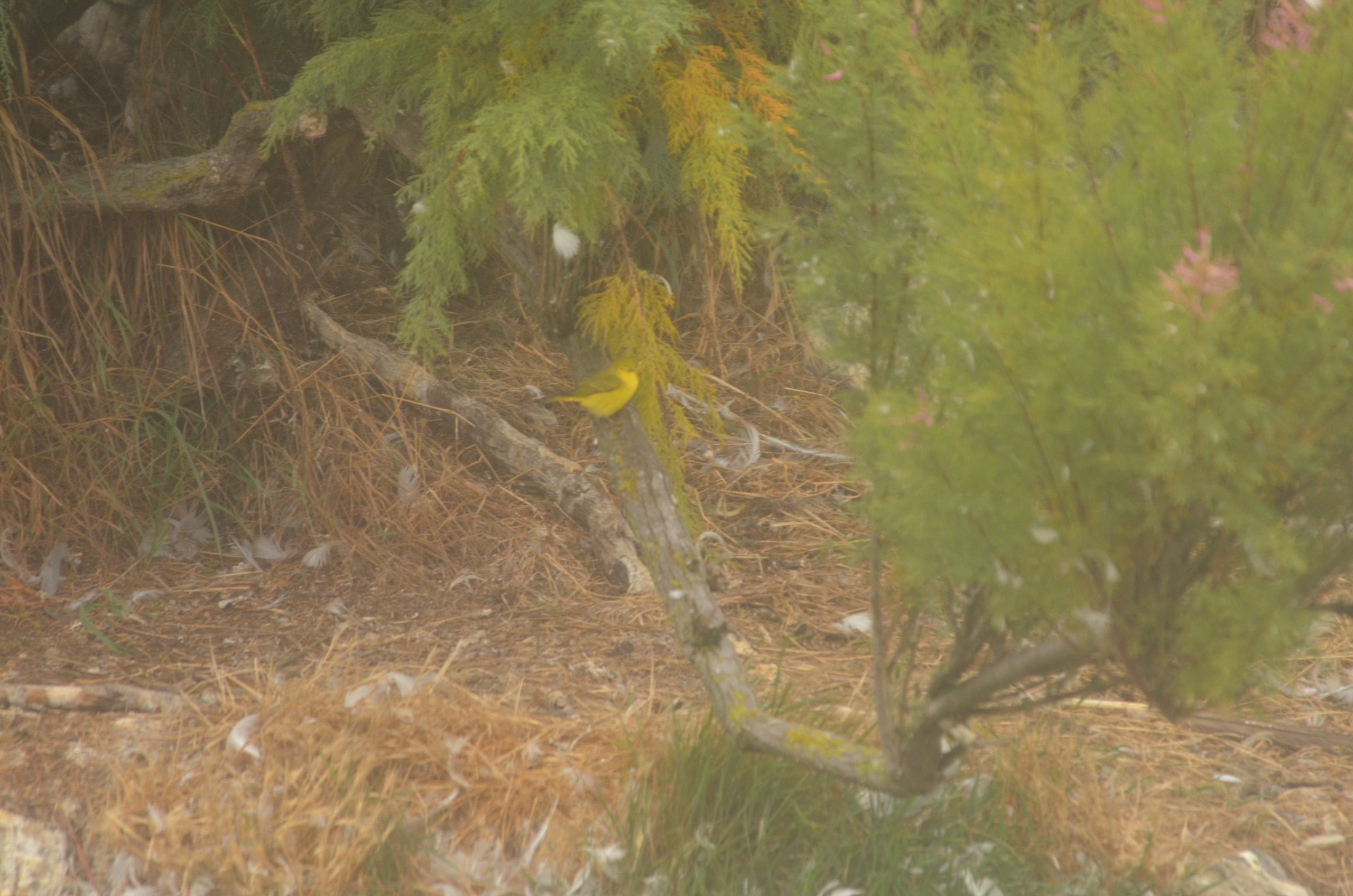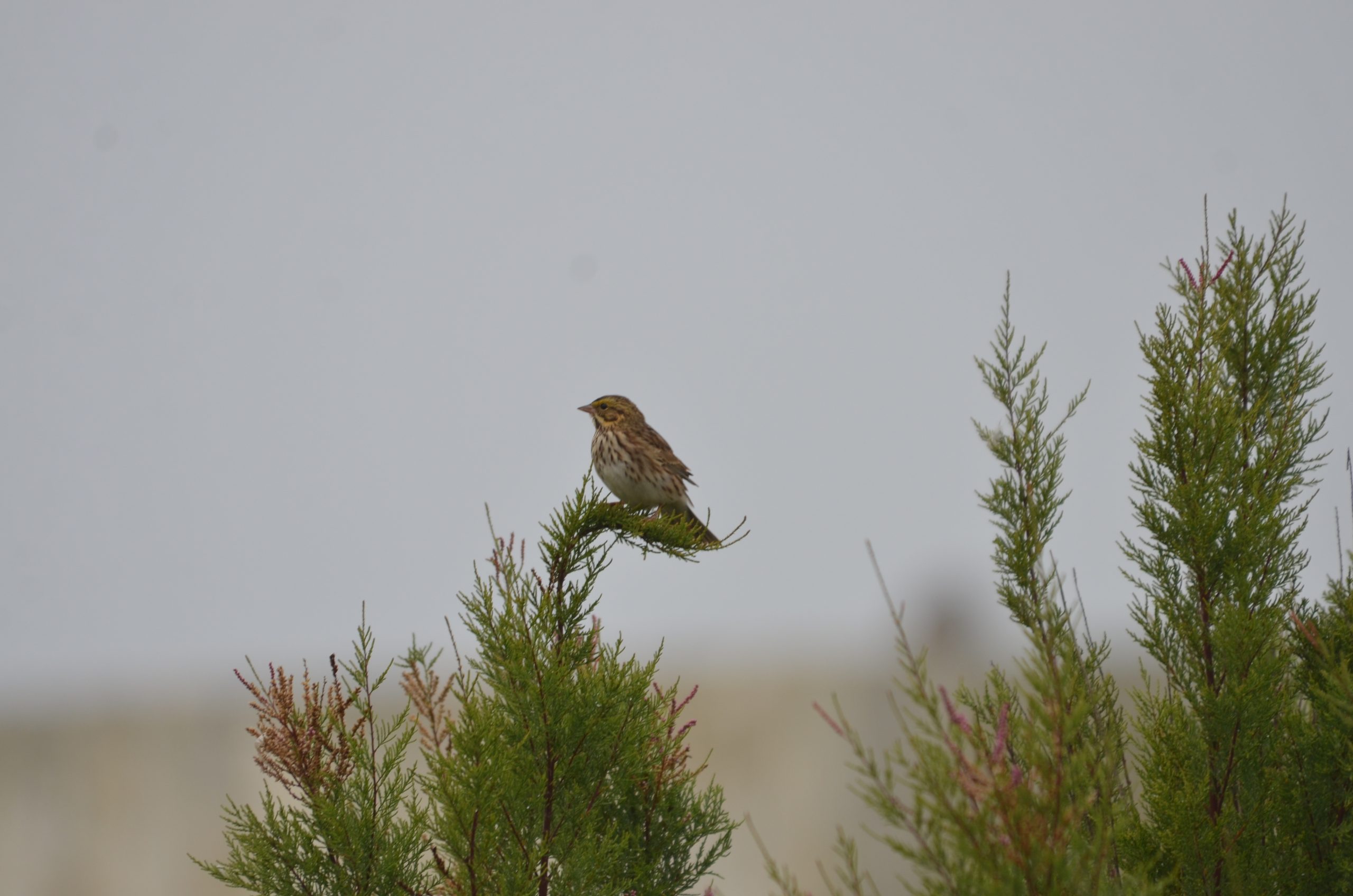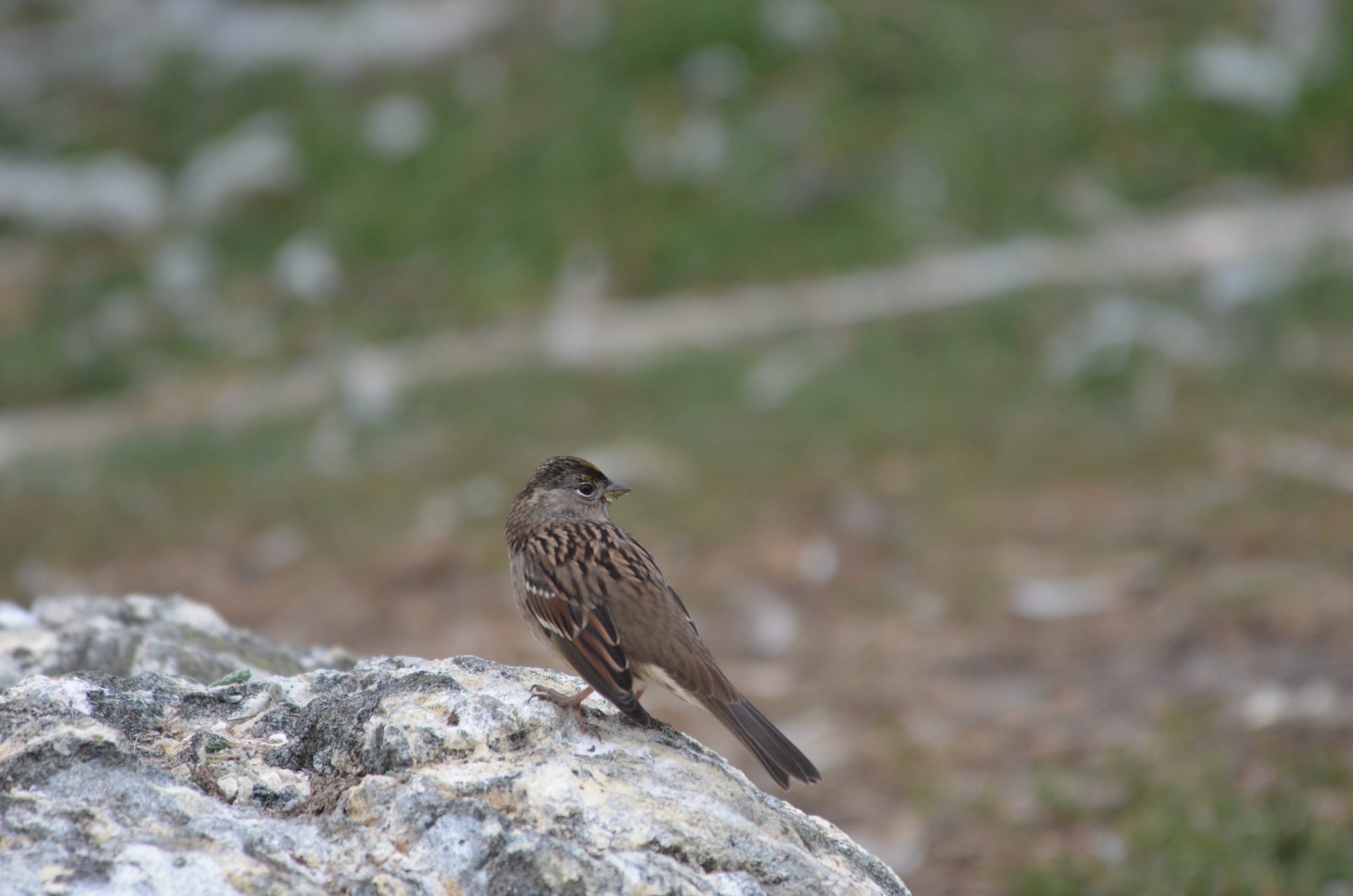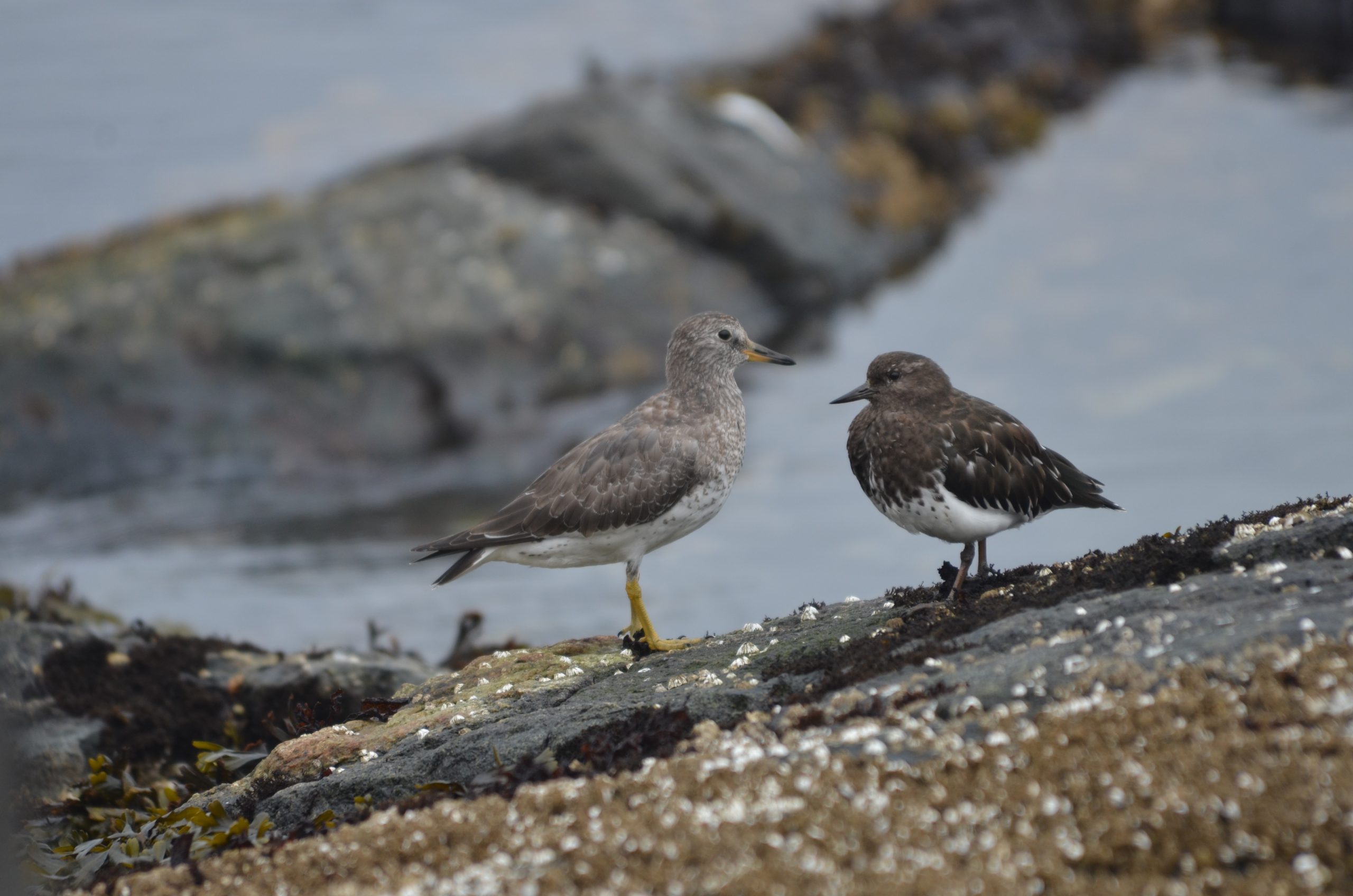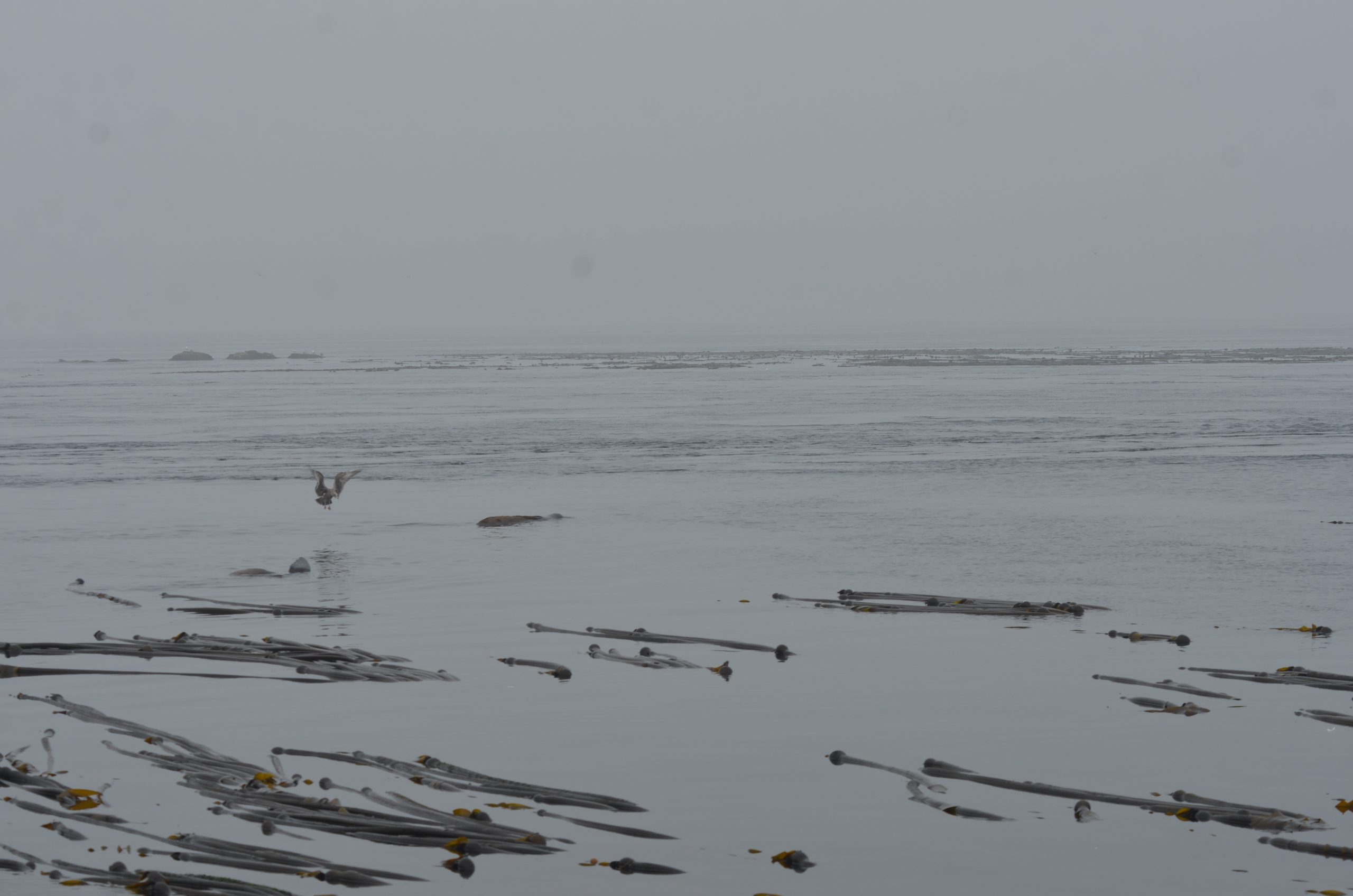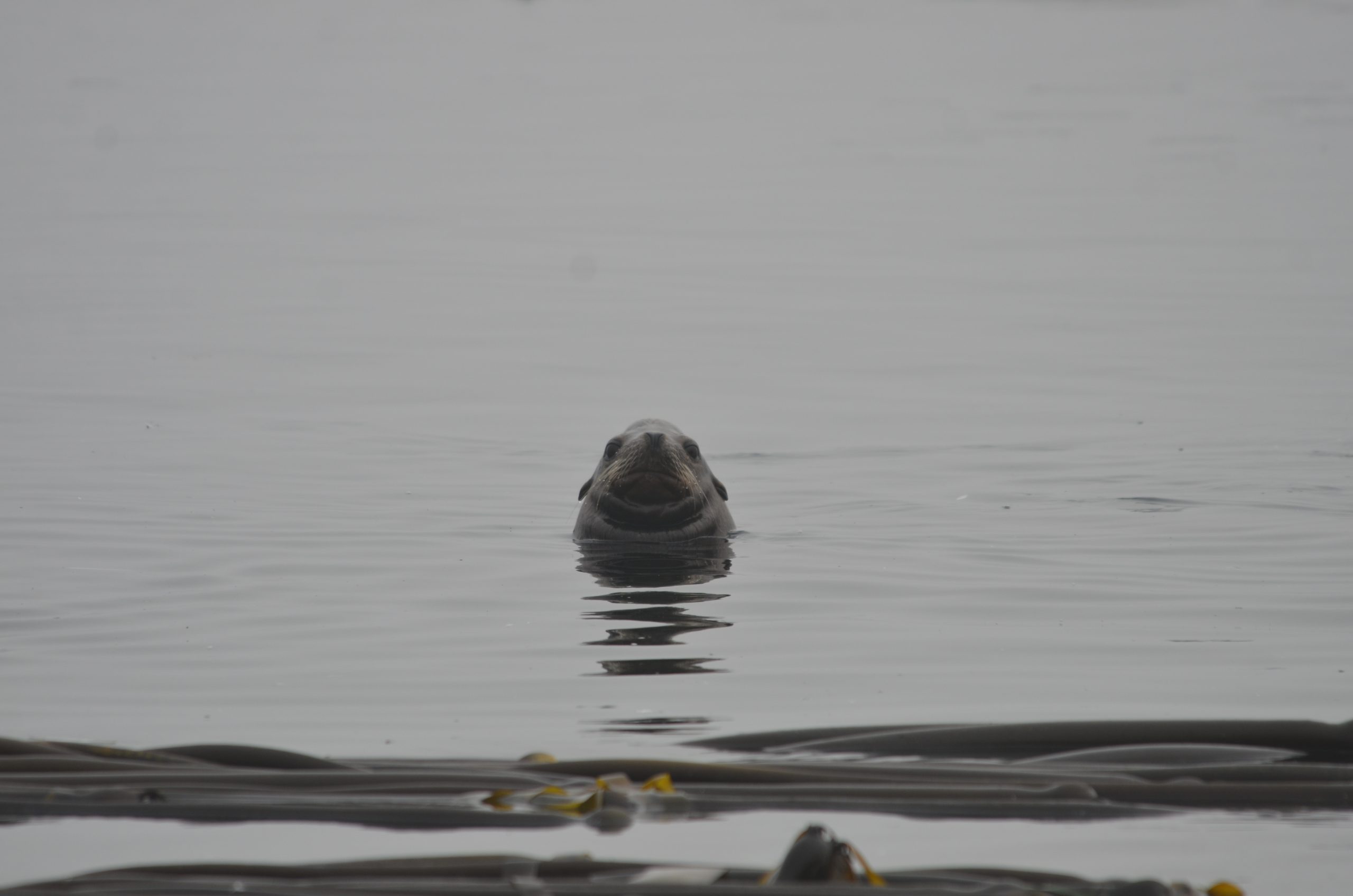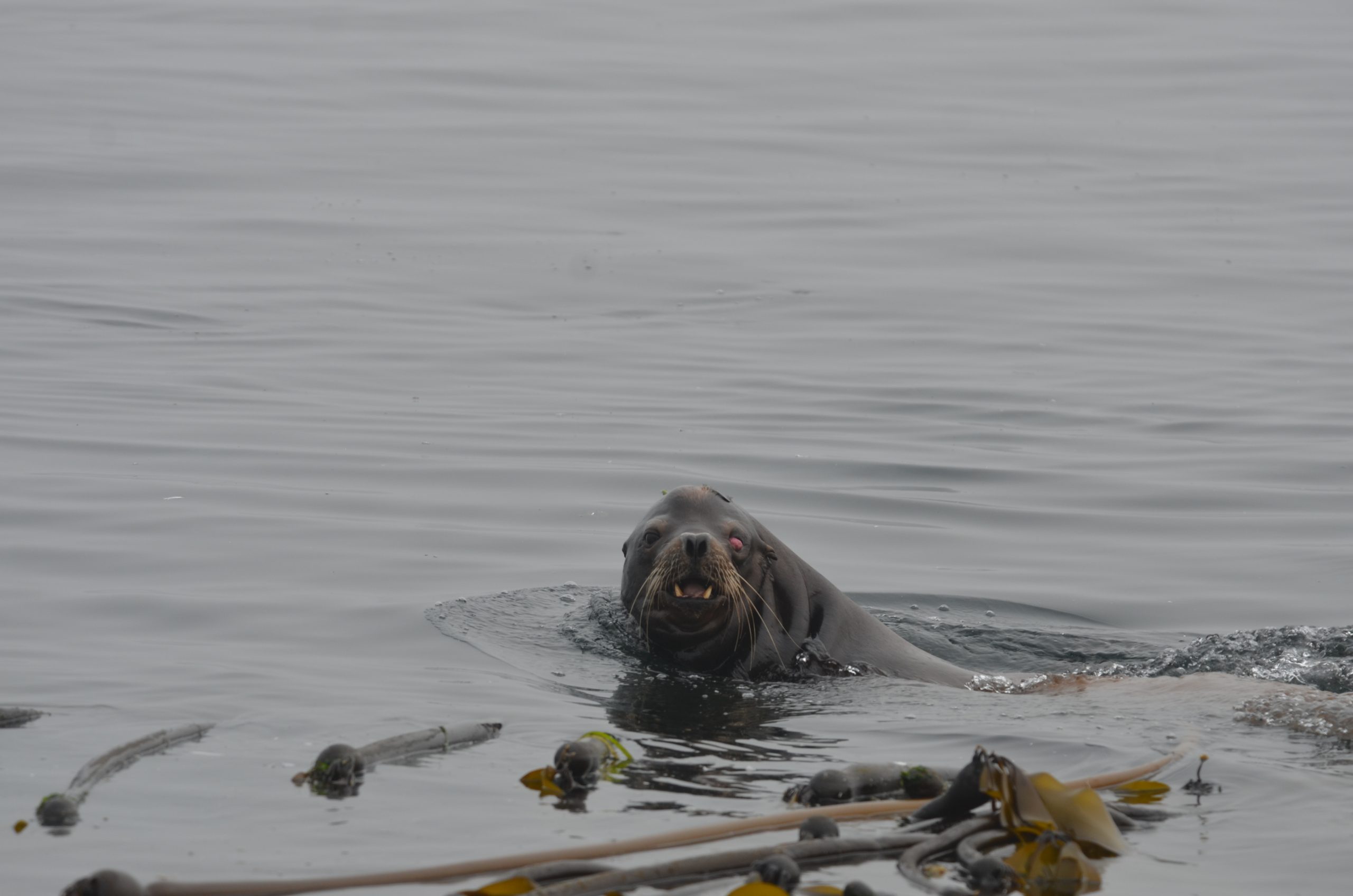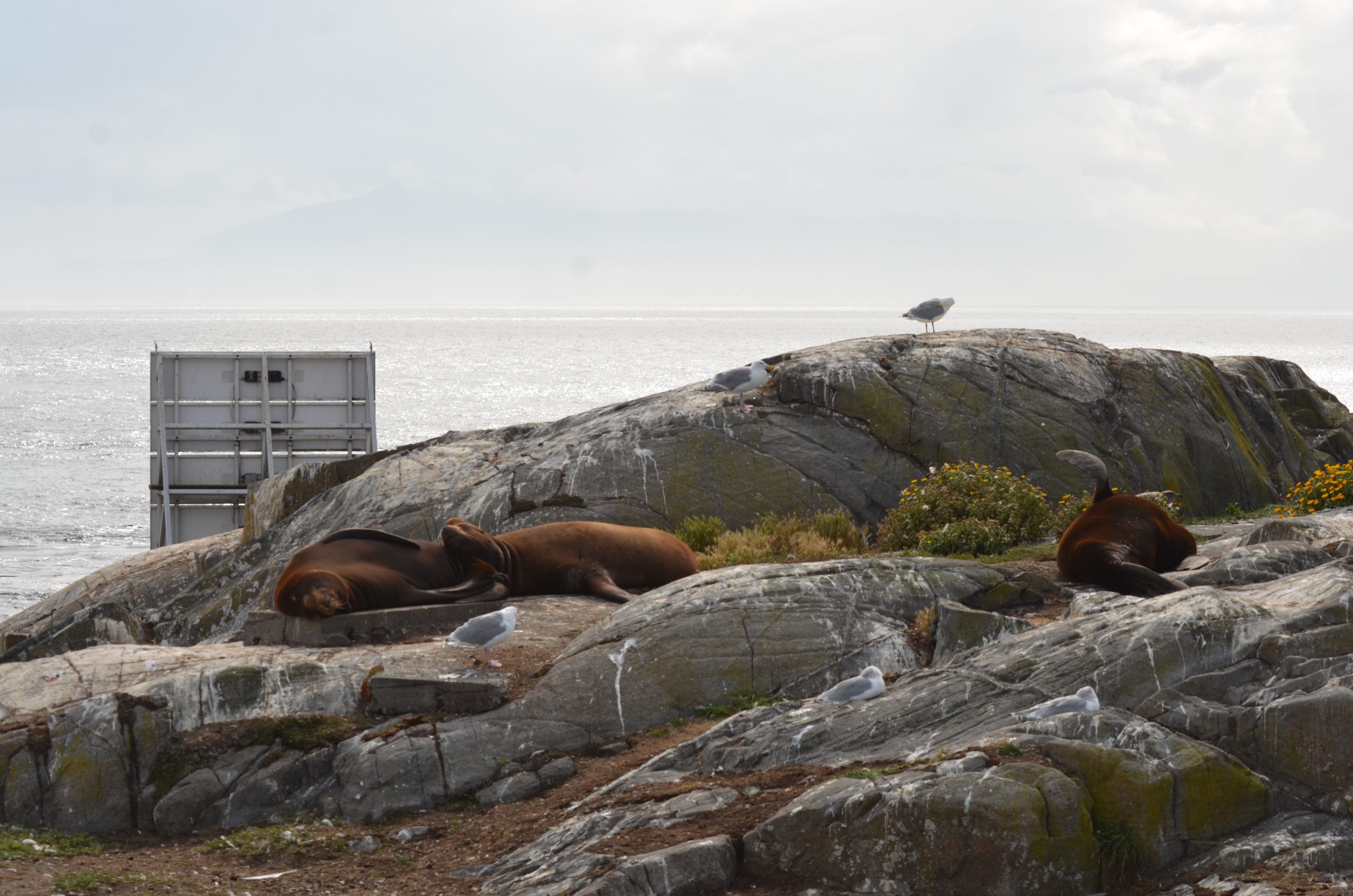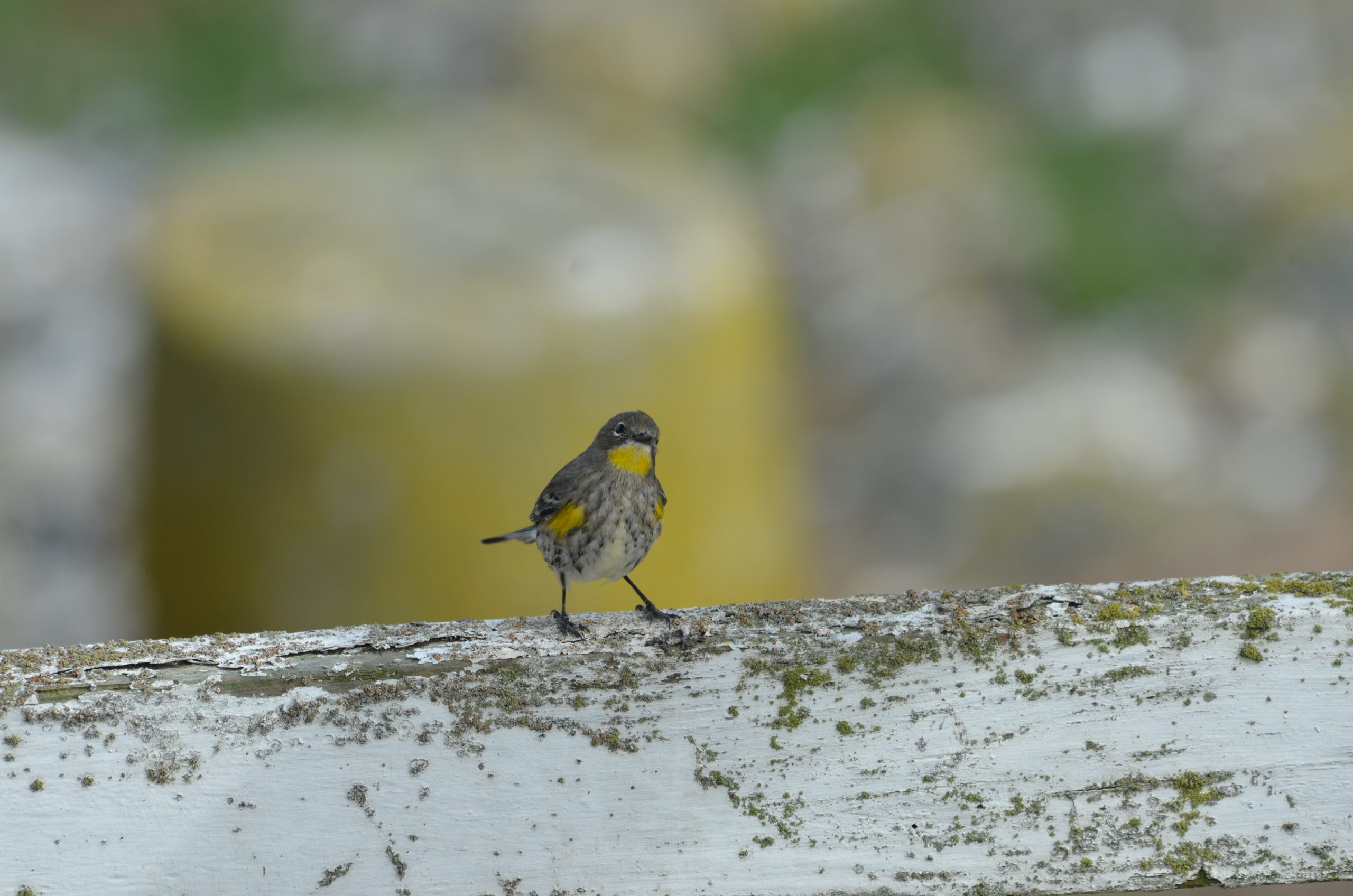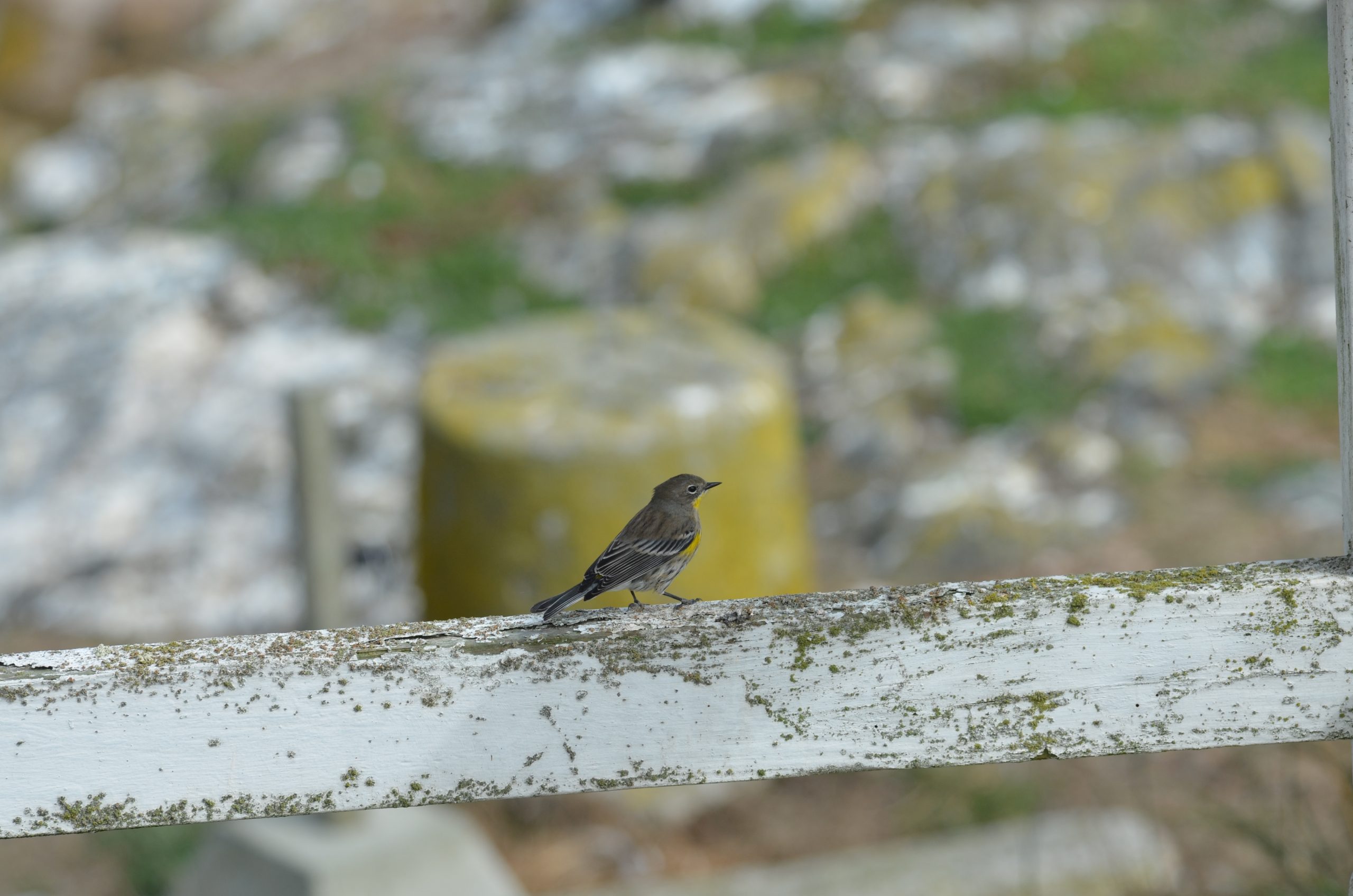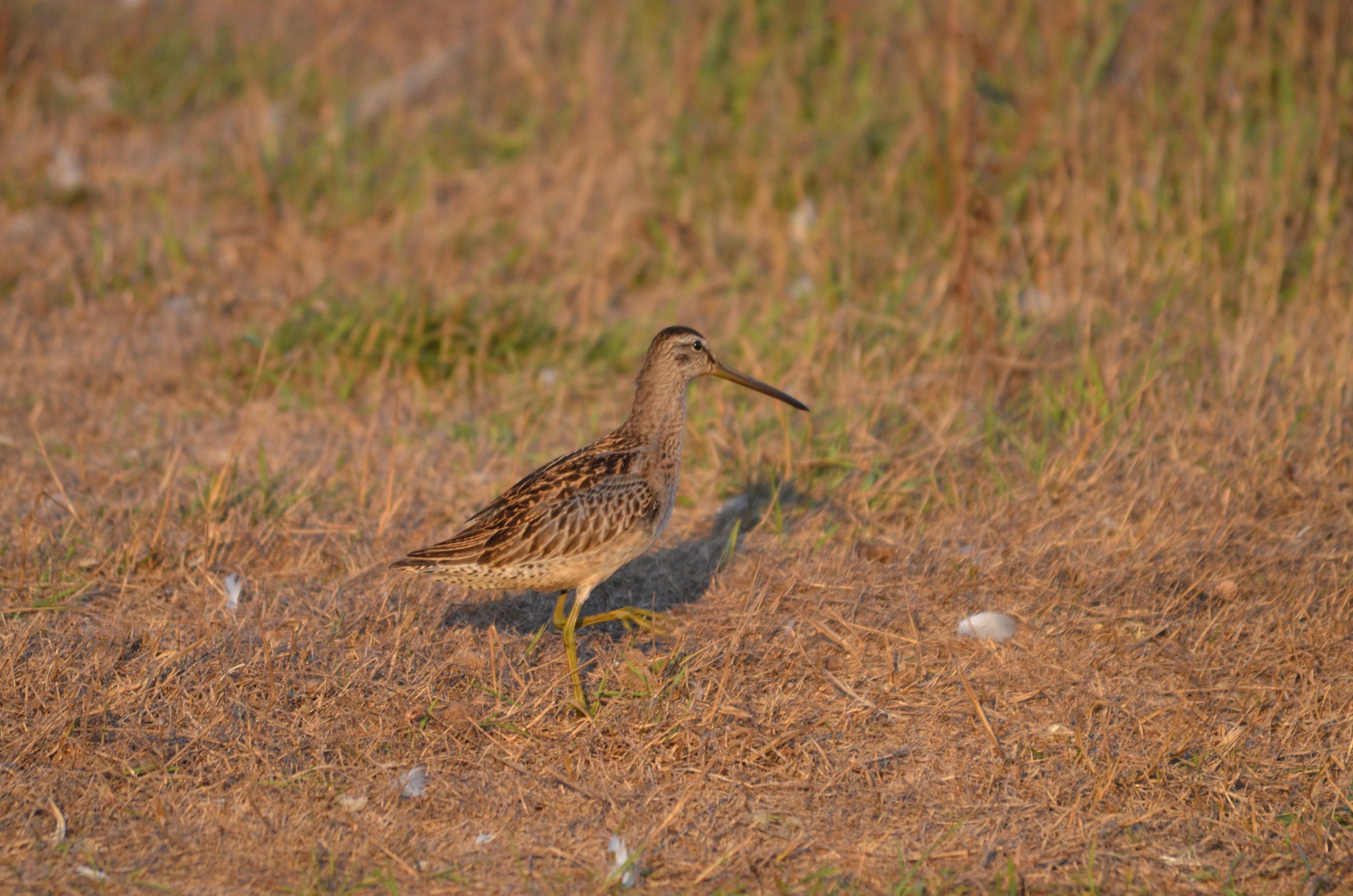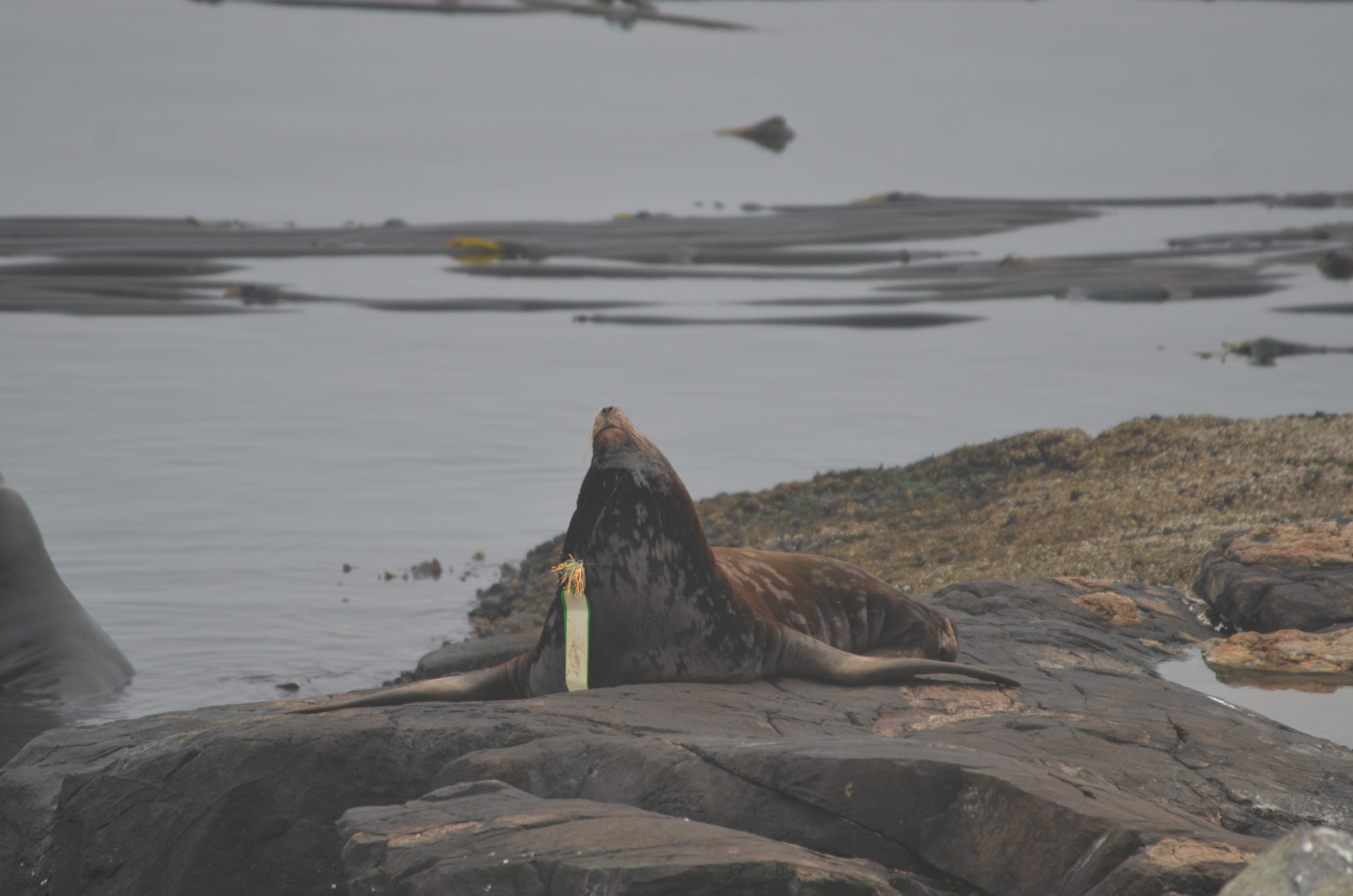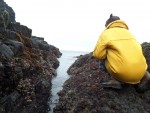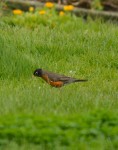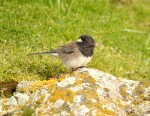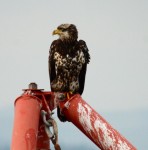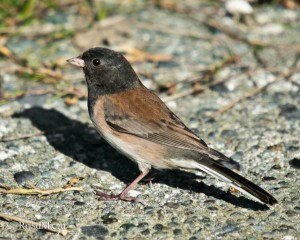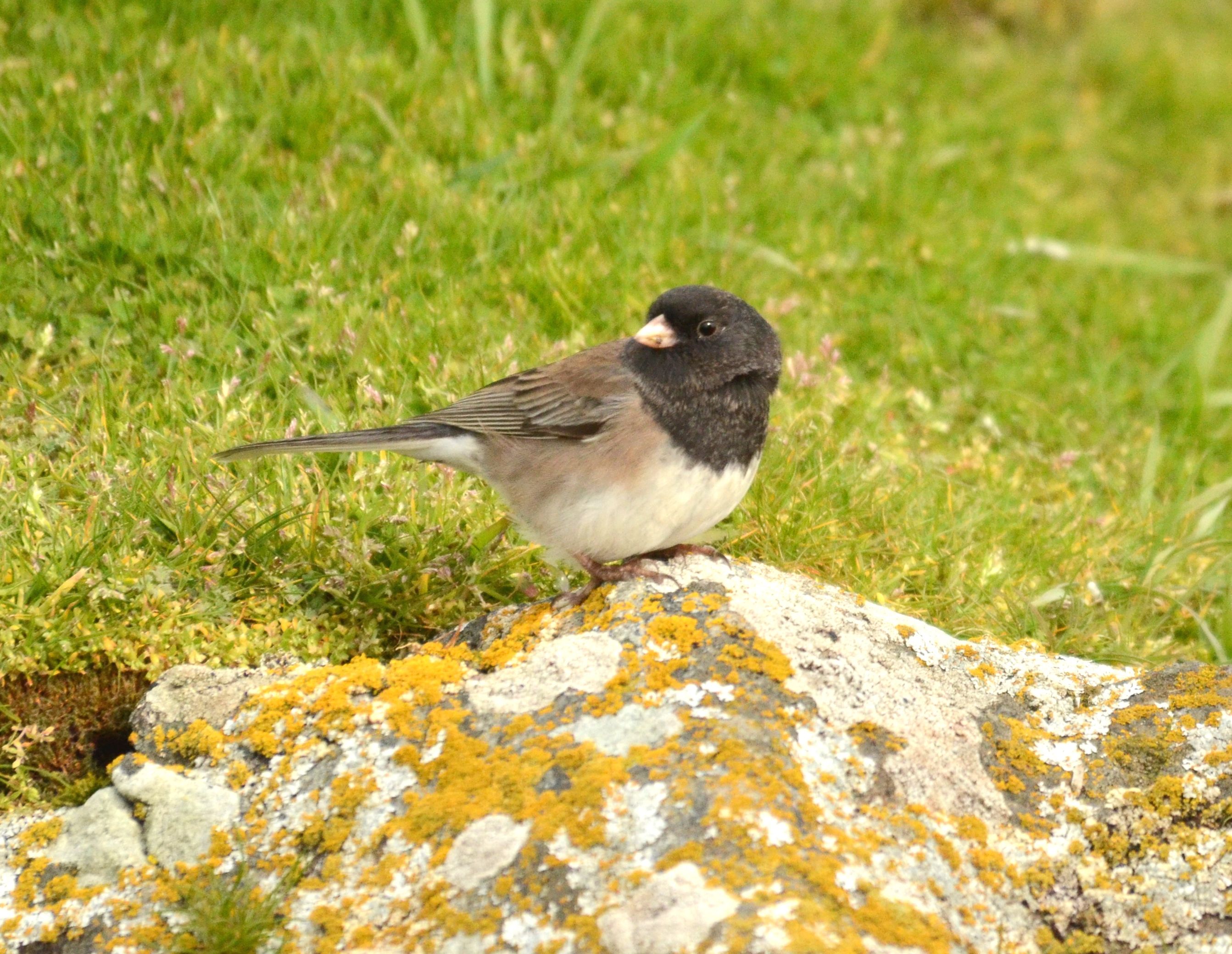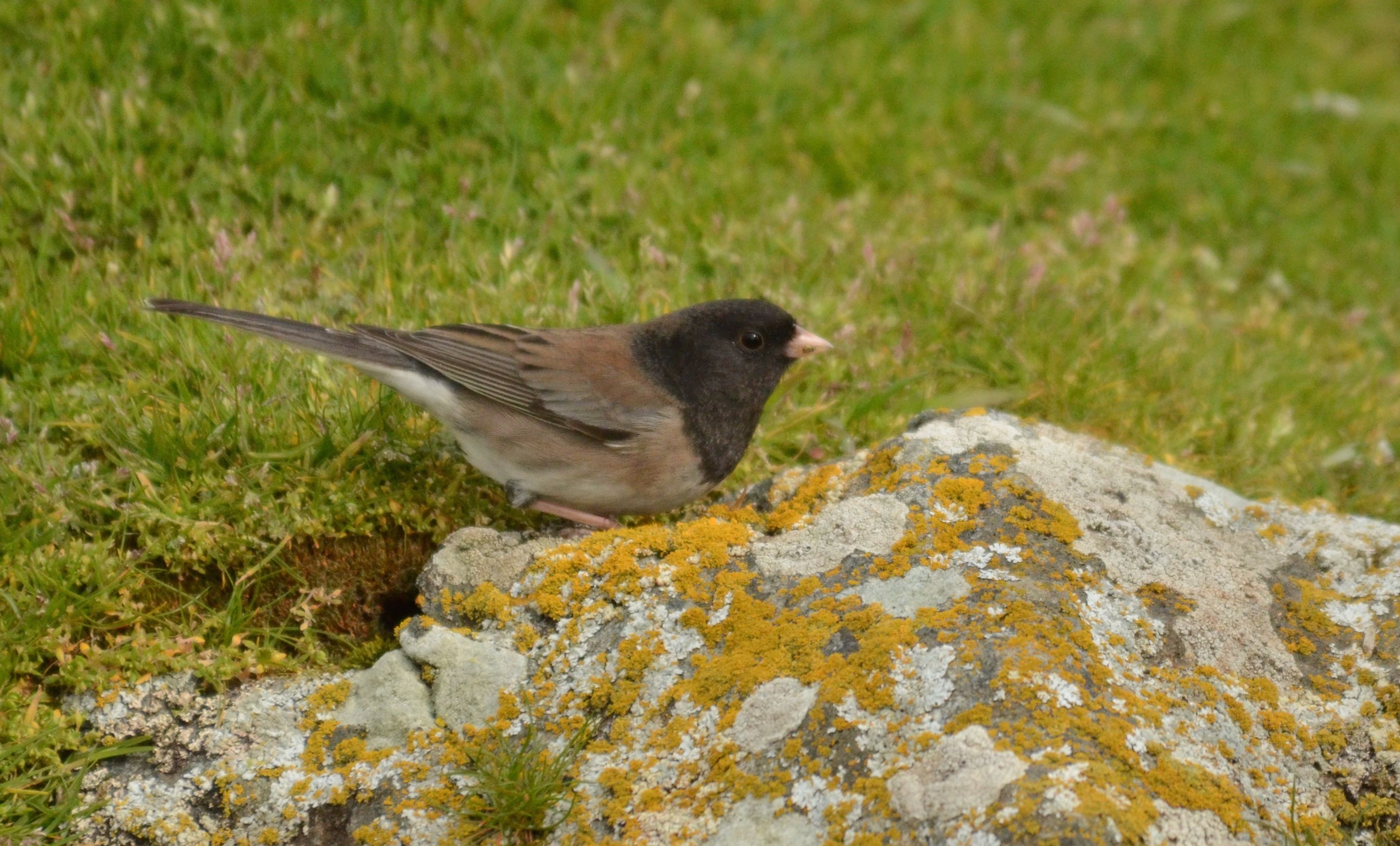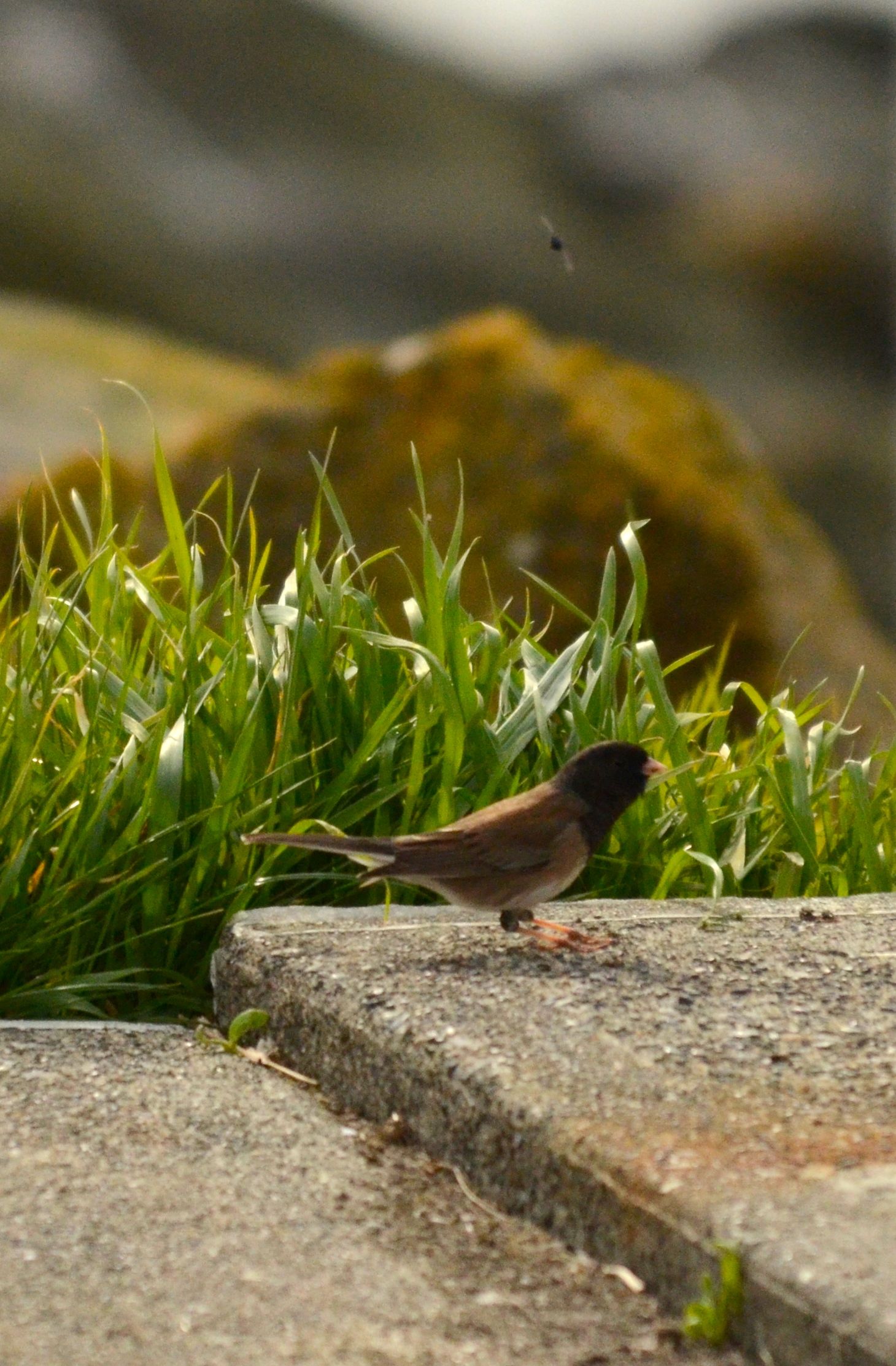Weather Today:
- Sky clear blue, intermittent thick fog
- Visibility .5 NM – 15+ NM
- Wind 5-10 knots W
- Sea state: calm
Visitors: Jeff and two college contractors visited today. A small handful of eco-tourism boats passed through as well.
Ecological:
- The fall weather is setting in and today we saw the first bald eagle that we have spotted in quite a while (since late spring). The sound of the gulls on the island lifting into the air is distinctive enough that we noticed right away!
- The sea lions have been enjoying lounging in the grassy areas around the low parts of island. They bicker constantly with each other but are just as quick to lay together in large groups when they are in need of a nap.
- Dark-eyed Junco
- Superyacht “Atessa IV”
- Stellar sea lion (1)
- (2)
- Brandt’s Cormorant
- Sea lions on jetty

